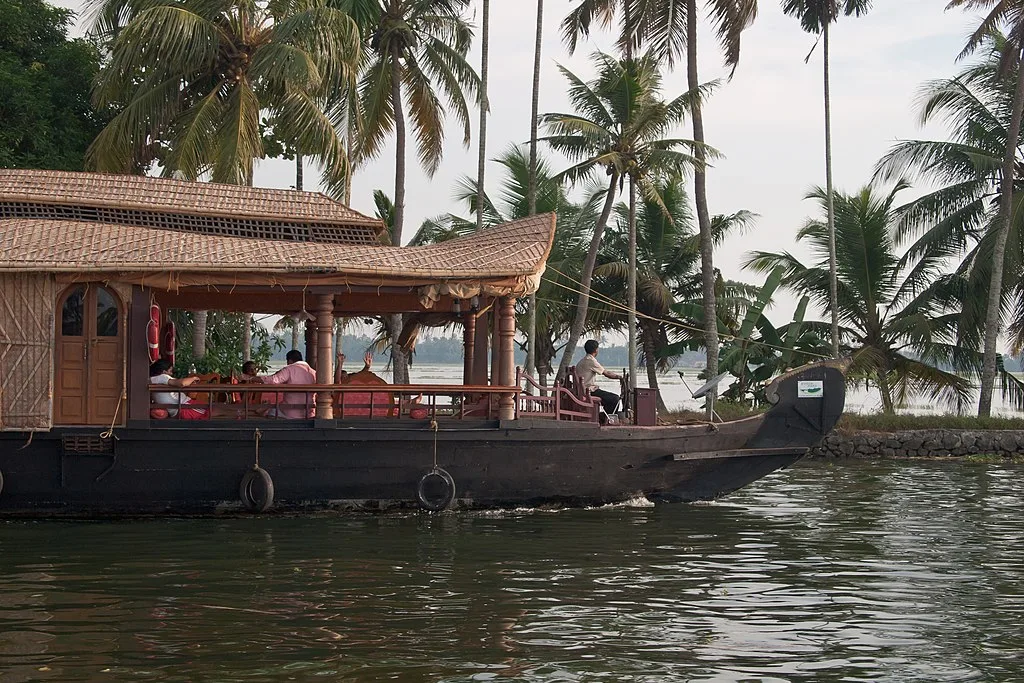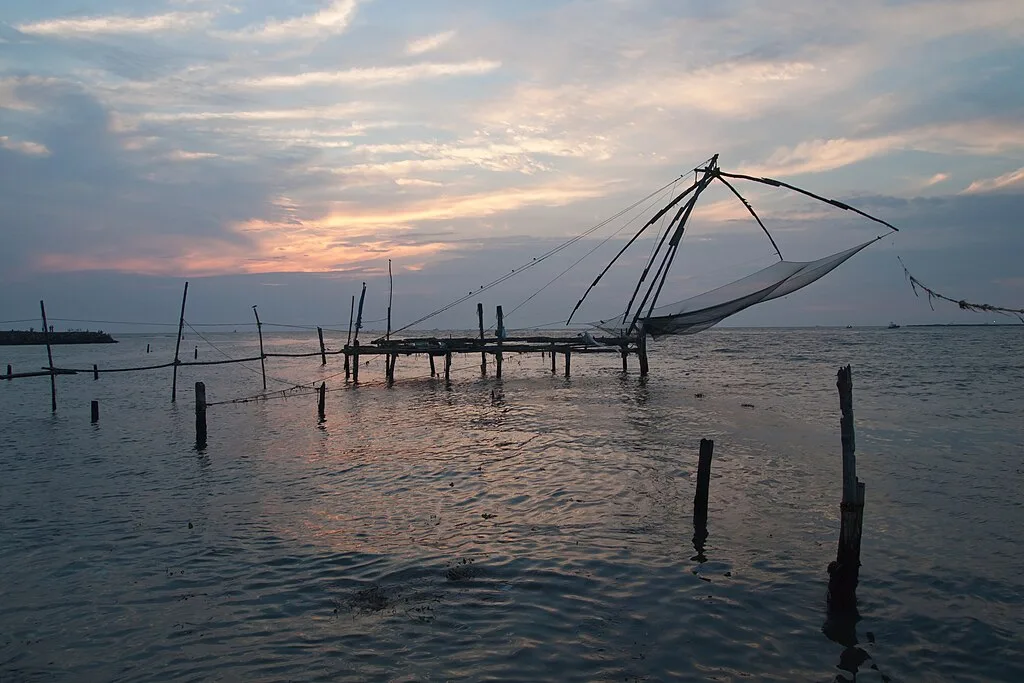Picture a place where the air is filled with the melodious symphony of birdcalls, where lush greenery embraces serene waterways, and where every turn unveils a captivating photo opportunity. Welcome to Kumarakom Bird Sanctuary, a hidden gem for bird photography aficionados and a paradise for nature enthusiasts like me.
The Unique Charm of Kumarakom Bird Sanctuary

Nestled in the enchanting backwaters of Kerala, Kumarakom Bird Sanctuary is a testament to nature’s artistry. Spread across 14 acres of lush wetlands, this sanctuary is a haven for avian wonders. What sets Kumarakom apart is its idyllic location—a mosaic of mangrove forests, paddy fields, and canals that create a natural refuge for birds.
Kumarakom isn’t just a sanctuary; it’s a harmonious blend of biodiversity and tranquility. The rich ecosystem of this region, shaped by the Vembanad Lake, offers an ideal habitat for both resident and migratory birds. The sanctuary’s proximity to the serene backwaters makes it a perfect spot for bird photographers to capture the vibrant world of birds.
Flora and Fauna at Kumarakom Bird Sanctuary

As you step into Kumarakom, you’ll be enveloped by a tapestry of lush flora and the gentle sounds of the backwaters. The sanctuary’s wetlands are adorned with verdant aquatic plants, providing a captivating backdrop for your bird photography.
Now, let’s turn our attention to the true stars of the show—the birds. Kumarakom boasts an impressive variety of avian residents. The Indian Darter, with its distinctive long neck and snake-like appearance, is a common sight, often seen drying its wings in the sun. Spotting these elegant birds in their natural habitat is a photographic delight.
Kumarakom’s wetlands also play host to other notable avian species. The Little Cormorant, with its striking blue eyes, and the Purple Heron, known for its regal plumage, are frequently seen wading through the shallows, providing excellent opportunities for photographers.
Endemic and Migratory Marvels

Kumarakom’s allure lies in its unique ability to host both endemic and migratory birds. The resident species include the White-breasted Waterhen, the Common Moorhen, and the Pheasant-tailed Jacana. These birds can be spotted throughout the year, making Kumarakom a year-round birding destination.
However, if you’re seeking an extraordinary experience, plan your visit during the migratory season, which typically spans from November to February. This is when Kumarakom transforms into a bustling avian metropolis, welcoming thousands of migratory birds. Keep your camera ready to capture the breathtaking sight of Siberian Cranes, Teals, and Garganeys among others, as they grace the tranquil waters of Vembanad Lake.
Planning Your Birding Expedition to Kumarakom Bird Sanctuary
So, you’ve decided to embark on a bird photography journey to Kumarakom? Here’s a roadmap to ensure you make the most of your visit:
Local Guidance
While Kumarakom’s natural beauty is captivating, consider hiring a local naturalist or guide to enhance your birdwatching experience. Local guides possess an in-depth knowledge of the sanctuary’s ecosystems and can help you spot even the most elusive species. You can easily find them near the entrance.
Local guides are not only adept at identifying birds but also provide fascinating insights into their behaviors and habitats. Their expertise adds depth to your bird photography, enriching your understanding of the avian world.
Accommodations
For a complete immersion in the world of birds, consider staying in one of the charming resorts or homestays in Kumarakom. Many of these accommodations are nestled amidst the backwaters, offering stunning views and easy access to the sanctuary.
Staying overnight in Kumarakom allows you to make early morning visits when the birds are most active and the lighting is ideal for photography. Additionally, the serene ambiance of the backwaters adds to the overall experience.
Ideal Time to Visit
The best time to visit Kumarakom for bird photography depends on your preferences. If you wish to witness the vibrant spectacle of migratory birds, plan your trip during the winter months, from November to February. This is when the sanctuary comes alive with the comings and goings of various bird species.
However, if you prefer a quieter and more contemplative atmosphere and wish to observe resident species, other months also offer rewarding birdwatching experiences. The monsoon season, from June to September, transforms the sanctuary into a lush green paradise, with several bird species engaged in breeding activities.
Getting There
Reaching Kumarakom is relatively easy. If you’re traveling from Kochi, the nearest major city in Kerala, it’s approximately a 2-hour drive to reach the sanctuary. The journey takes you through picturesque landscapes, including lush paddy fields and serene backwaters.
Alternatively, you can take a train to Kottayam, the nearest railway station, which is about a 30-minute drive from Kumarakom. Kottayam is well-connected to major cities in Kerala and other parts of India.
Beyond Birdwatching
While Kumarakom is primarily celebrated for its avian population, there’s more to explore:
Houseboat Cruises

The backwaters of Kumarakom are famous for their houseboat cruises. Consider booking a houseboat tour to explore the tranquil backwaters while enjoying a luxurious and relaxing experience. Keep your camera ready as you might spot birds perched on the backwaters or flying above.
Houseboats also offer unique vantage points for bird photography, allowing you to capture birds against the backdrop of serene waters and swaying palm trees.
Village Walks

Take a break from birdwatching and embark on a village walk to discover the local way of life. Stroll through picturesque villages, interact with the friendly locals, and observe traditional activities such as fishing and coir making. These walks provide insights into the cultural heritage of the region.
Visit the Vembanad Lake

Kumarakom is situated on the banks of the Vembanad Lake, Kerala’s largest lake. A visit to the lake offers opportunities for boating, fishing, and experiencing the breathtaking scenery. You might even spot some waterfowl while cruising on the lake.
Tips and Techniques
Before you set off on your bird photography adventure in Kumarakom, here are some valuable tips to make the most of your experience:
- Equipment: Ensure you have a telephoto lens with a focal length of at least 300mm to capture distant birds. Carry extra memory cards and batteries to avoid missing a perfect shot.
- Silence and Stealth: Birds are sensitive to noise and movement. Maintain a low profile and move quietly to avoid disturbing them. Quick and sudden movements can startle the birds, causing them to fly away.
- Patience: Bird photography often requires waiting for the perfect moment. Be patient, observant, and ready to seize the opportunity when it arises. Bird behavior can be unpredictable, so stay prepared.
- Respect Nature: Adhere to the sanctuary rules and guidelines to ensure the well-being of the birds and their habitats. Avoid littering, feeding the birds, or getting too close to their nesting sites.
In Conclusion
Kumarakom Bird Sanctuary is a testament to the enchanting beauty of Kerala’s backwaters and the rich tapestry of avian life it hosts. It is a sanctuary where the symphony of bird calls harmonizes with the rustling of palm fronds, creating a serene ambiance that is both captivating and tranquil.
A visit to this sanctuary is not just an opportunity to witness the diverse bird species, but also a chance to immerse oneself in the lush, vibrant ecosystems that make it all possible. Kumarakom Bird Sanctuary stands as a reminder of the intricate connection between nature and our well-being, urging us to cherish and protect these precious habitats for generations to come.
